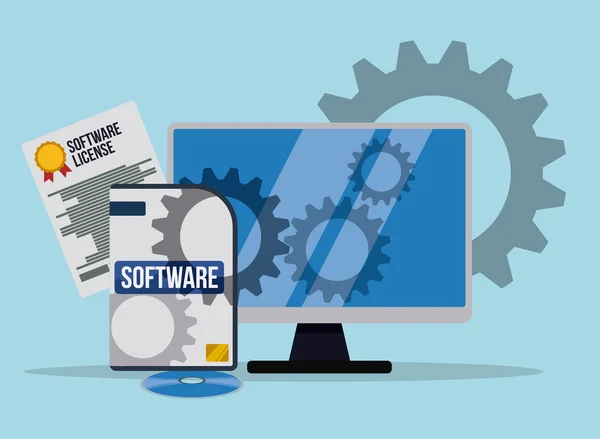Design Software: Empowering Creativity and Innovation

Design software has revolutionized the creative process, empowering designers to transform their ideas into stunning realities. With its advanced features and intuitive interfaces, design software has become an indispensable tool across various creative disciplines. In this article, we will explore the transformative power of design software, its benefits, and its impact on pushing the boundaries of creativity and innovation.
Evolution of Design Software
Design tools have come a long way, from traditional methods to digital solutions. Pencil, paper, and drafting boards have made room for computer-aided design (CAD) software, ushering in a new era of design possibilities. CAD software allows designers to create, modify, and analyze designs with speed and precision. It has become the backbone of architectural and industrial design, streamlining complex processes and enabling remarkable achievements.
Advantages and Benefits of Design Software
The adoption of design software brings numerous advantages to creative professionals. First and foremost, it significantly enhances efficiency and productivity. Designers can now iterate and experiment with their ideas quickly, eliminating the need for time-consuming manual adjustments. Design software also opens up a world of creative possibilities, allowing designers to explore new techniques, styles, and aesthetics. With powerful rendering capabilities, designers can visualize their creations in real-time, making informed decisions and improving the overall design quality.
Moreover, instructional design software facilitates collaboration and teamwork. Multiple designers can work on the same project simultaneously, making it easier to share ideas, provide feedback, and ensure a cohesive outcome. Collaborative features and cloud-based platforms have made remote work seamless, enabling teams to work together despite geographical barriers.
Design Software in Different Creative Disciplines
Design software has found its applications in various creative disciplines, transforming how professionals work and pushing the boundaries of their fields.
In the realm of graphic design, software such as Adobe Photoshop and Illustrator have become industry standards. These tools offer many features, including image editing, vector graphics, and typography, enabling designers to create visually stunning graphics, logos, and illustrations.
Architecture and industrial design have witnessed a significant shift with the advent of CAD software. Architects and designers can now create detailed 3D models, simulate lighting conditions, and even perform structural analysis, revolutionizing the design and construction process.
In the fashion industry, design software has become a vital asset. Designers can digitally create patterns, visualize garments in 3D, and even simulate fabric draping. These advancements have accelerated the design-to-production timeline, reduced costs, and facilitated efficient collaboration between designers and manufacturers.
Interior designers also benefit from design software, which allows them to digitally create and manipulate 3D spaces. By virtually placing furniture, experimenting with color schemes, and visualizing lighting scenarios, designers can provide clients with realistic representations of their vision, making the design process more interactive and engaging.
Innovative Applications of Design Software
Design software is not just limited to conventional applications; it constantly pushes the boundaries of creativity and innovation. Generative design, powered by algorithms and artificial intelligence, enables designers to explore countless design iterations based on specified constraints, resulting in unprecedented and inspiring solutions.
Virtual Reality (VR) and Augmented Reality (AR) are revolutionizing the way designers present and experience their work. VR allows designers to immerse themselves and stakeholders in a virtual environment, providing a realistic sense of scale, materials, and spatial relationships. AR, on the other hand, overlays virtual elements in the real world, enabling designers to showcase their designs in a more interactive and immersive manner.
Cross-disciplinary collaboration is also being facilitated by design software. Artists, engineers, and architects can now merge their expertise and create groundbreaking projects. The software acts as a bridge, enabling seamless communication, sharing of ideas, and the integration of multiple disciplines, leading to innovative and holistic design solutions.
Future Trends and Possibilities
The world of design software is ever-evolving, and exciting trends and possibilities are on the horizon. Machine learning and AI are gradually being integrated into design software, offering intelligent design assistance. These technologies can analyze design patterns, provide automated suggestions, and even generate design variations, augmenting the creative process and offering new avenues for exploration.
Cloud-based design software is becoming increasingly popular, allowing designers to access their projects from anywhere and collaborate with team members in real time. This flexibility enables seamless remote work, fostering global collaboration and breaking down geographical barriers.
Virtual and mixed reality technologies hold immense potential in design software. As these technologies continue to advance, designers can expect more immersive and interactive design experiences. They can walk through virtual environments, manipulate digital objects with their hands, and gain a deeper understanding of spatial relationships, further enhancing the design process.
Conclusion
Design software has transformed the creative landscape, empowering designers and unleashing their potential for innovation. From graphic design to architecture, fashion, and interior design, design software has revolutionized how professionals conceptualize, visualize, and communicate their ideas.






